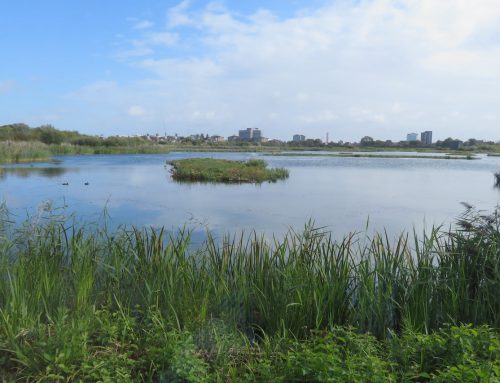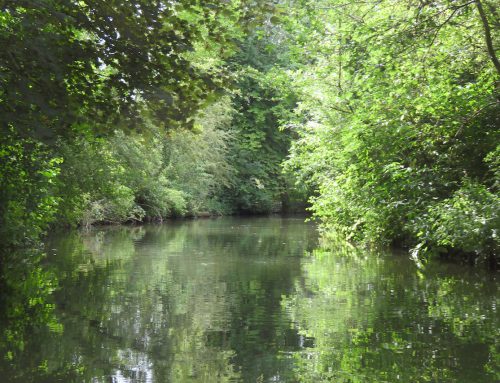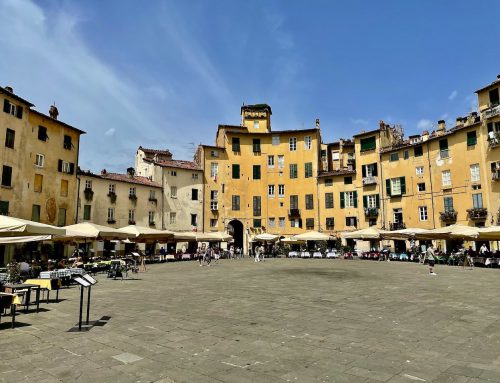Dry stone walling depends on the weather
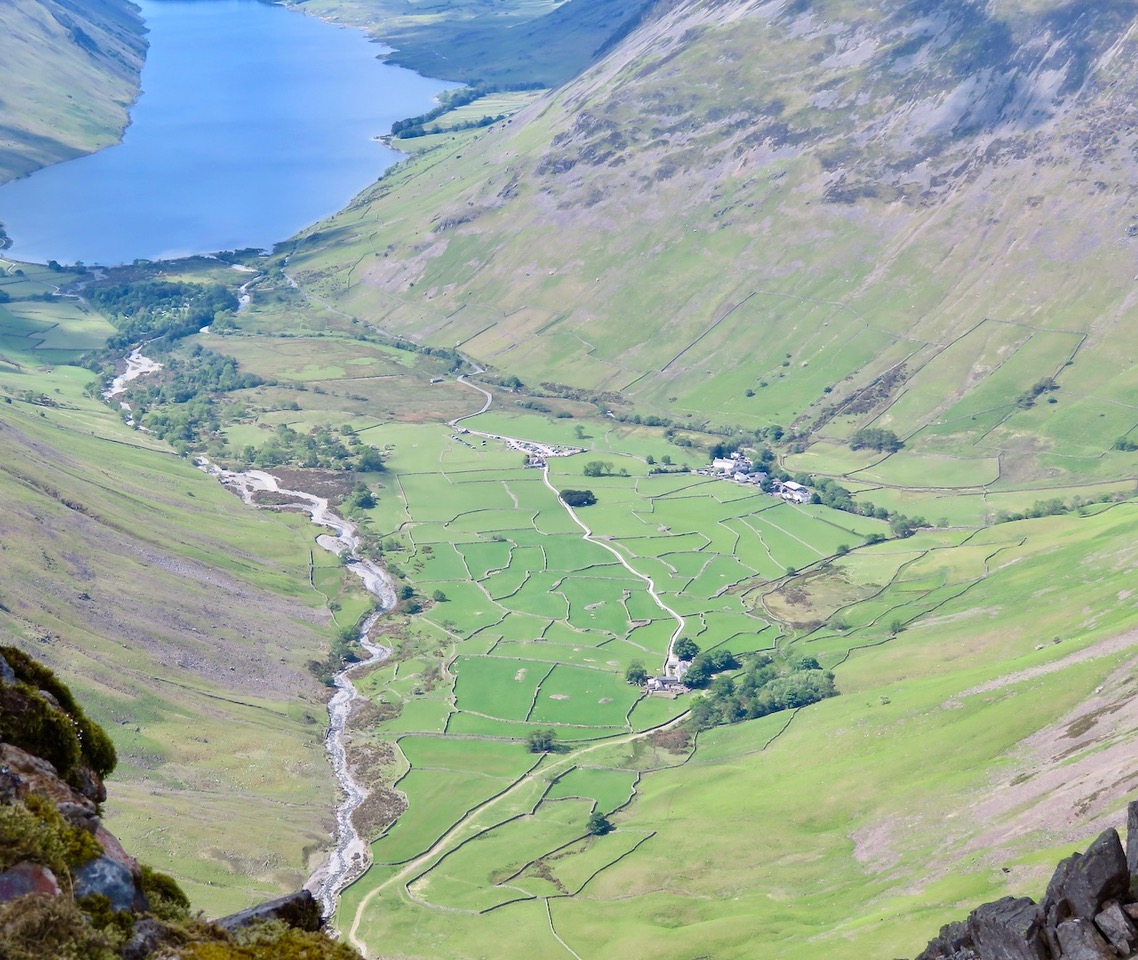
Someone spent a long time making those walls down there

Someone spent a long time making those walls down there
Troutbeck, United Kingdom
“If the weather is like this,” he said, “then I’ll be walling. But it’s no use in the frost.”
I looked at the Lakeland hill farmer, as I tried to extract a commitment from him. I wanted to establish if he would be building a dry-stone wall the next day, as I hoped to join him and learn about walling. An established delivery company had only just texted me to say my parcel would appear at 9.13 a.m. Surely a hill farmer could be as precise? But hill farmers and delivery companies are different.
“What will do you do if it is frosty?” I asked.
The farmer shrugged. “Probably clear out my barn,” he replied, and with that our conversation was over.
Gladly, the next morning there was no frost, so dawn found me with the farmer on the side of a Lakeland slope. Around us was nothing but mountain, without a house or village in sight. A short stretch of wall had collapsed, and the farmer was there to repair it. The farmer, his dog, a bright yellow dumper truck, and me feeling inexperienced and bashful thanks to my brand-new protective gloves.
The United Kingdom has 120,000 miles of dry-stone walls. It does not take long as a Lake District resident to realise how important they are. Dry stone walls do what they say on the tin. There is no cement, no mortar, just stone standing on stone. Different regions construct them differently, but the principles are the same. The intent is to build a wall that will last a very considerable time. And they do. In Ireland’s County Mayo a complete field system was discovered that was carbon-dated to 3800 BC and you can be sure there are some even older. Dry stone walls can be found worldwide and were the first manmade construction.
“Your stone is upside down,” said the farmer, as I stood cradling what felt to be a ton-weight boulder and wondering where I should place it. I looked at the rock without any clue how to tell top from bottom, left from right, or front from back. Yet the farmer knew instantly. With one hand, he plucked the rock effortlessly from me, turned it a full 180 degrees, ensured it was flat, and within moments the boulder was in place.
“How did you do that?” I asked.
“Just did,” came the reply.
"Who taught you?”
“No one. Up here you learn on the job.”
Dry-stone walling is hard labour and slow work. It is something you cannot hurry. One metre of wall carries a ton of stone and a single waller can build three metres in a day. There is a knack to it, standards too, and a Dry-Stone Walling Association with branches throughout the land. There is immense skill involved, with a huge difference between the best and worst. A top-end professional should make a wall last 100-150 years, although failure in less than five years is very common.
It took the farmer and me, the novice assistant, all morning to fill a two-metre gap, which had been created by ferocious Lakeland weather. In a Cumbrian deluge, the dry-stone walls can become horizontal showers, as the water rushes through, unobstructed by cement and mortar. It is why the walls remain standing, although portions do collapse on occasion.
Walling has its own language, which also changes depending on location. There are footings and founds, batters and bases, bee boles, copings and heartings. There are wedges and stoops, smoots and runners, roods, pinnings and cripple holes.
The principle is simple, the building is not. Walls can be single thickness or double, double being more common. Between the two faces of the double wall are smaller stones, the so-called heartings. These can be treasures when reconstructing a wall, as although stones should be used as heartings, sometimes they are not, and all sorts have been used in earlier times. Shoes, rotted clothing, sometimes money when a wall has been a secret hiding place. One waller even found a grenade, with all work ceasing until Bomb Disposal had done their duty.
The bottom of a wall is broader than its top, with each face being angled at 1 in 6. The base width is half the total height. Larger stones go at the bottom, smaller ones higher up, while at the top is a line of carefully angled coping. The two faces are held together by occasional throughstones that bridge the gap between the faces.
“How did I do?” I asked once our morning was over, and we both looked proudly at the finished result. The broken wall was now pristinely vertical.
“Not bad for a beginner,” said the farmer. “Interested in doing more?”
For a moment I felt pleased, although sensed something begrudging about the farmer’s tone. Perhaps he was trying to make me feel happy. But I nodded, as the short stretch of wall had shown me the skill that is needed for dry-stone walling. It is not something that comes by accident.
“I’d like to,” I replied.
“OK then,” said the farmer. “I’ll see you tomorrow. Assuming the weather allows us.”
And that was it. A brief pandemic elbow shake and I was on my way. Lesson two depended on the weather.
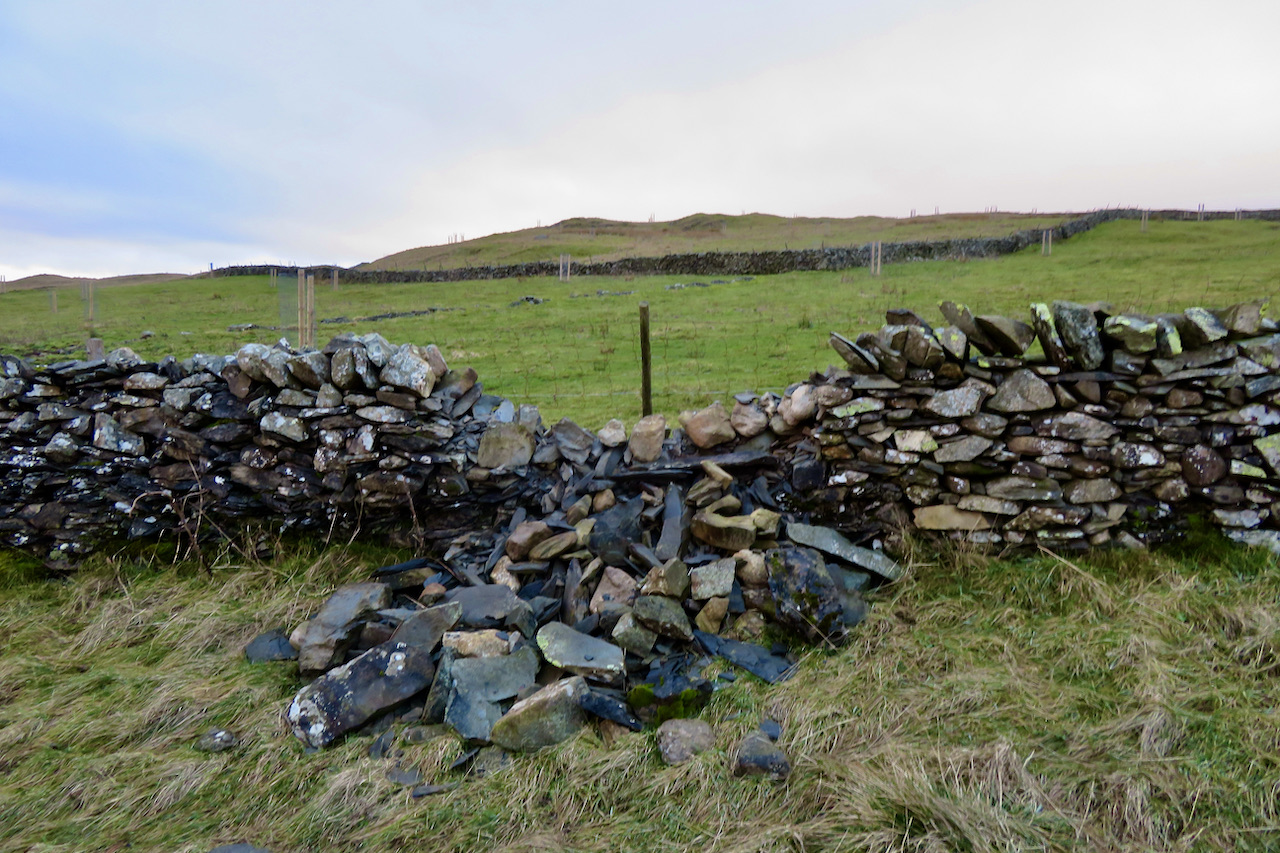
Before work started
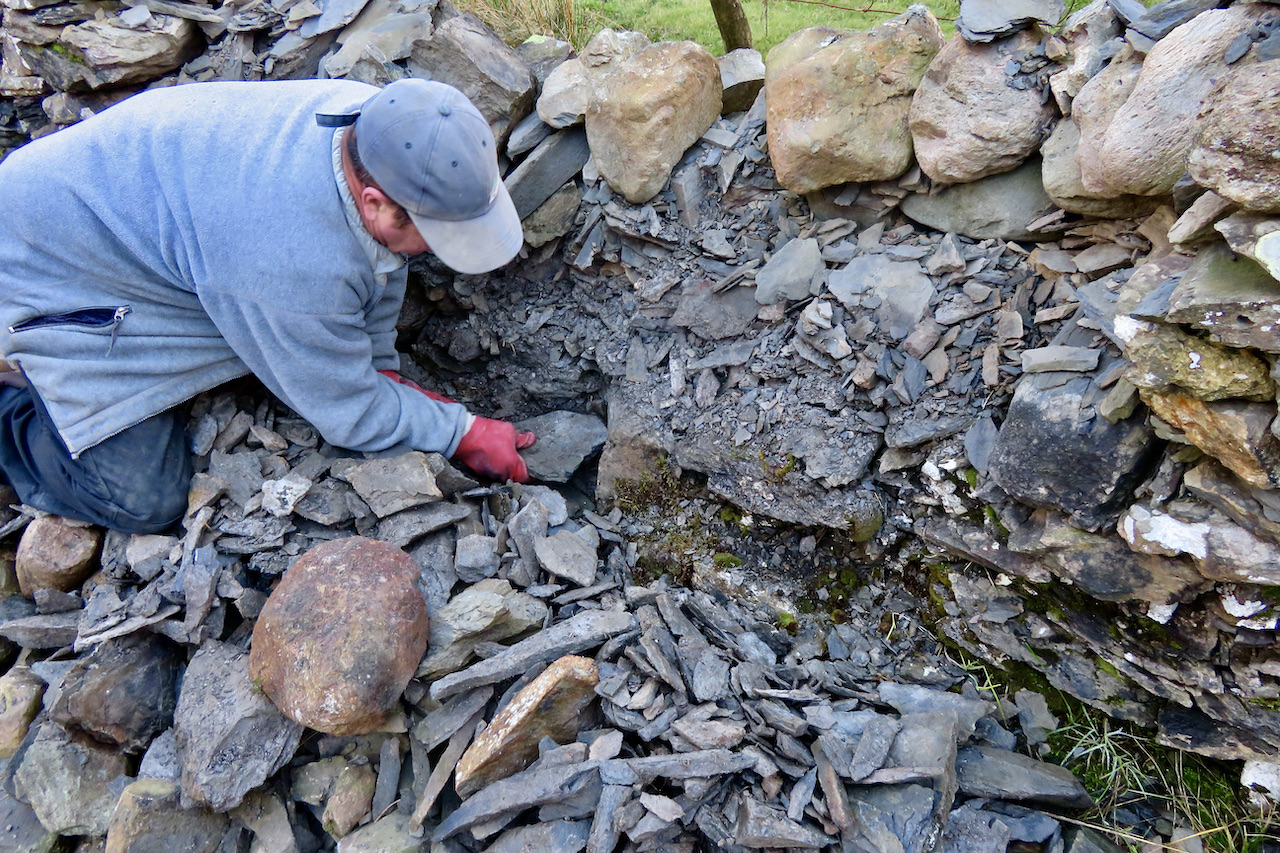
Repair underway
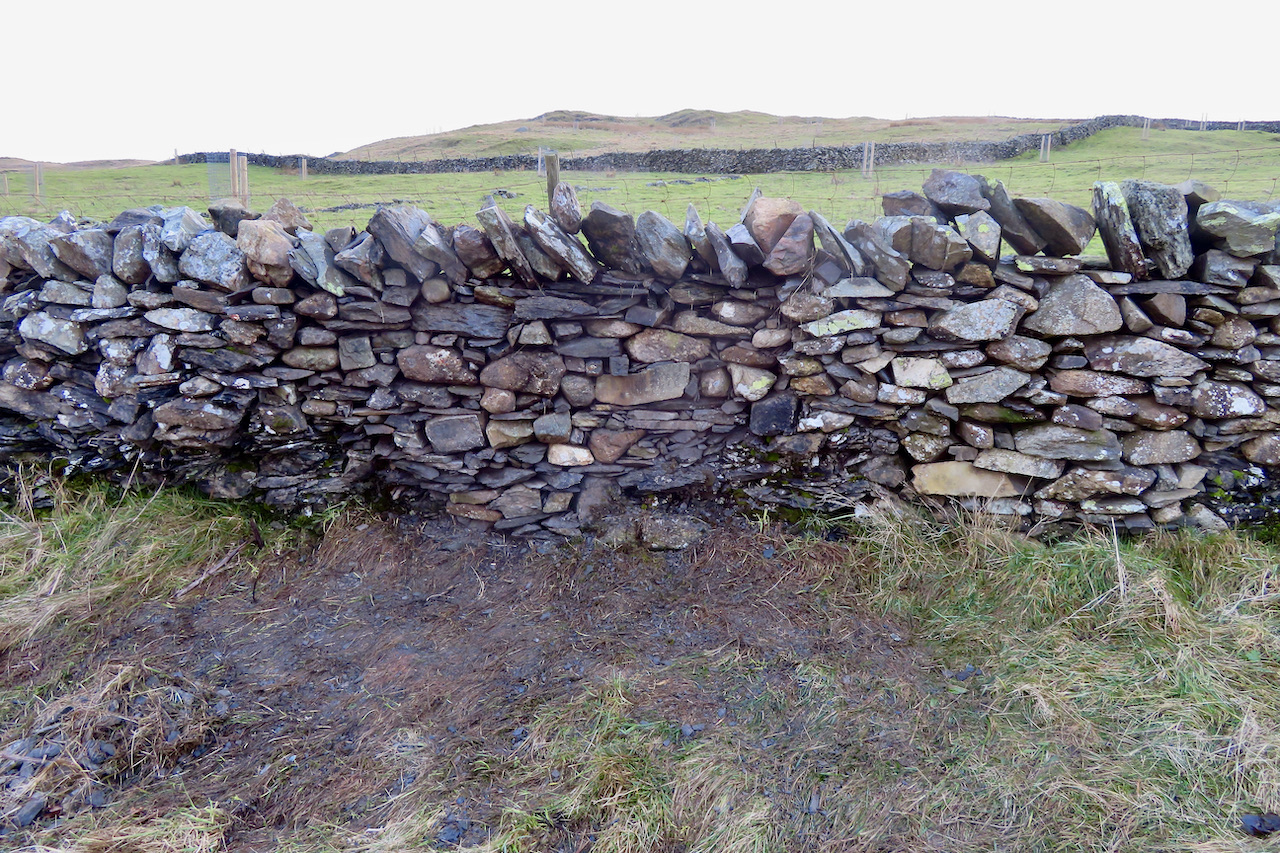
The finished product



